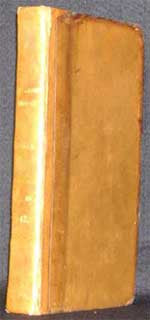Cat No.: IET0069:
In the 1740s the Physico Historical Society of Ireland expressed an ambitious plan to publish a survey of each county in Ireland, although only four surveys (Down, Kerry, Cork and Waterford) ultimately appeared in print. Decades later, the Dublin Society, established in the 1730s, and becoming the Royal Dublin Society in 1820, launched a similar project, which proved considerably more successful. Under this initiative, the first county surveys appeared in 1801, and between that year and 1832, twenty three county surveys were completed. No surveys were completed for Fermanagh, Louth, Longford, Westmeath, Limerick, Kerry and Waterford.
Each county was surveyed with the aim of determining the 'actual state, capabilities and defects of agriculture, manufactures and rural economy', and most follow a similar structural layout. In practice the surveys contained a vast quantity of local information on almost every aspect of the county surveyed. Because these studies were carried out under central direction the quality of the information provided is good, and given their early date, they remain an invaluable source for the study of each county. They record many details about conditions in pre-Famine Ireland, including social and economic conditions, the growth of population and poverty, education, religion, history, the state of the Irish and English languages and local customs.
Many of the authors of the surveys were responsible for more than one county, but none were as prolific as Sir Charles Coote, who, in the space of three years published surveys of Armagh (1804), Monaghan (1801) and Cavan (1802) in Ulster, and Queen's (1801) and King's (1801) Counties, in Leinster. Coote's 300 page Cavan survey follows a familiar layout, with agricultural issues receiving prominent attention. Five chapters in the book focus on the individual baronies, highlighting local methods of cultivation, agricultural practices and industrial production. Linen, the chief domestic industry, also receives due attention. The quality of roads - 'injudiciously made and worse kept' - and economic structures are also detailed.
Coote's conclusions are stark, and he is highly critical of county's landlord class, whom should, he asserts, be leading by example. 'This county does not raise corn sufficient for its own supply … rentals might be fully increased … if the spirit of industry, which must first spring from the landlords themselves, would more generally prevail'. 'Flax culture is miserably followed; draining is totally neglected: a little attention to inclosures [sic], which shew [sic] so little care, is now particularly required; nor should the better repairs of the county roads be a secondary consideration'.
Like most of our CDs, Coote's readable Cavan survey is fully searchable, and will prove an invaluable source for researchers interested in County Cavan, the south Ulster region or in social developments in early nineteenth century Ireland.
No. of CDs is: 1 ; Format is: PDF ; Searchable?: YES;
FastFind: No; ISBN No.: unavailable;


